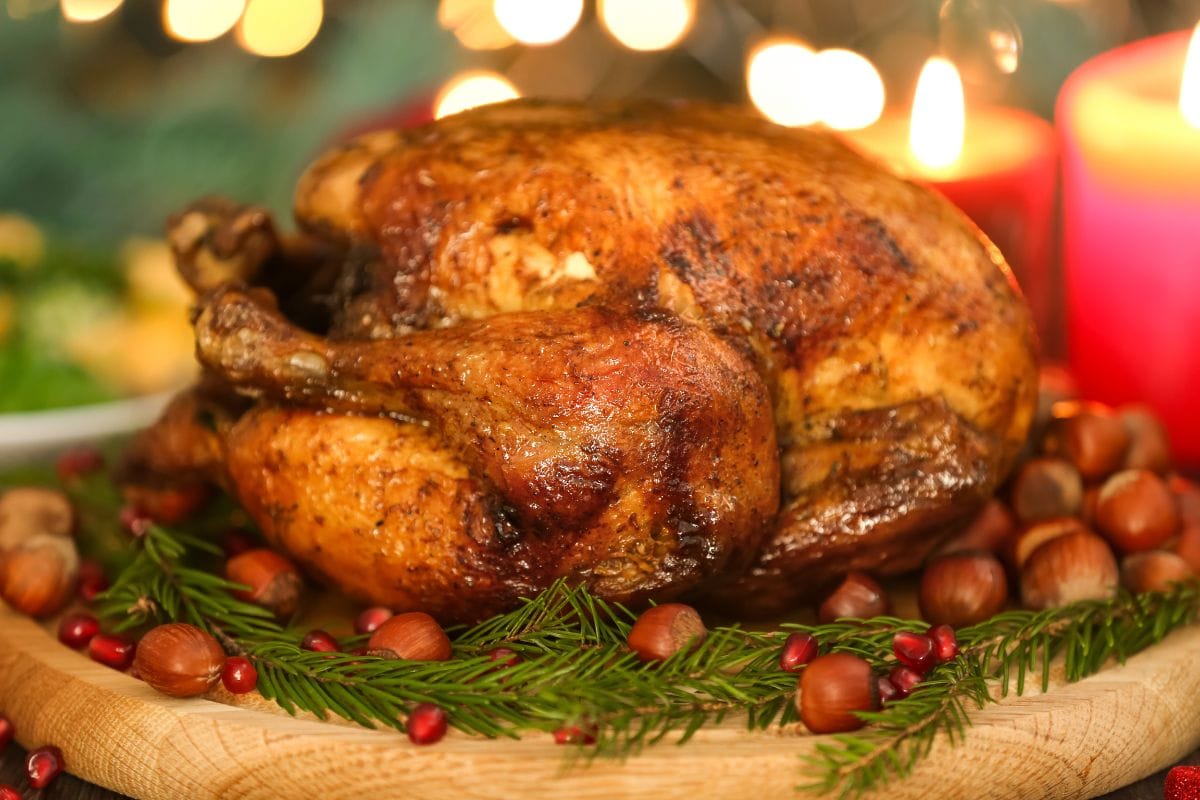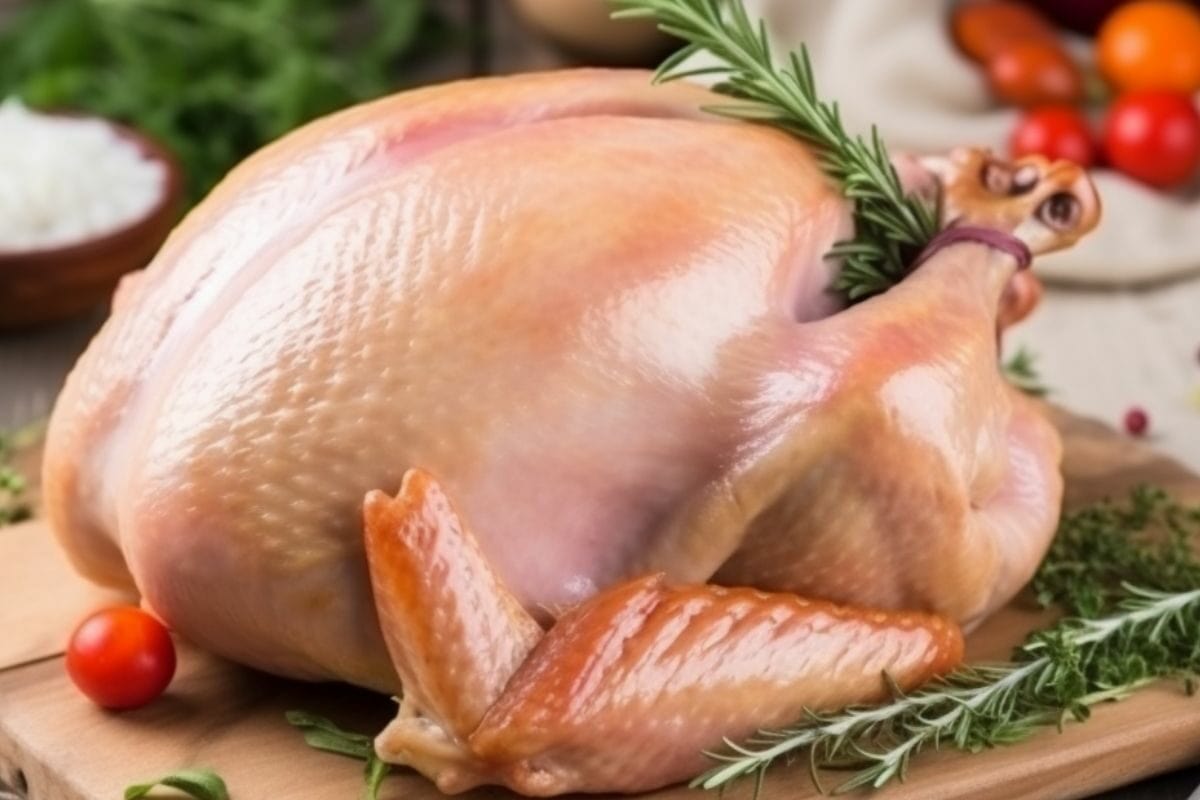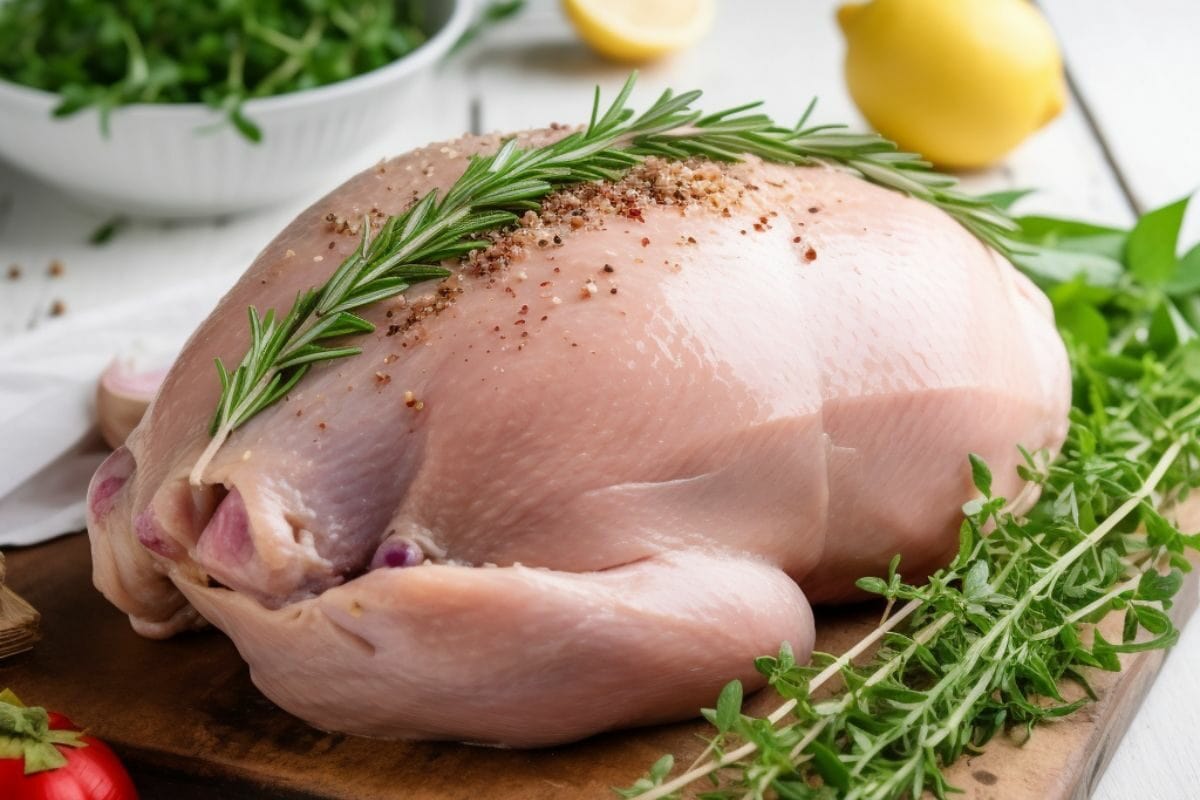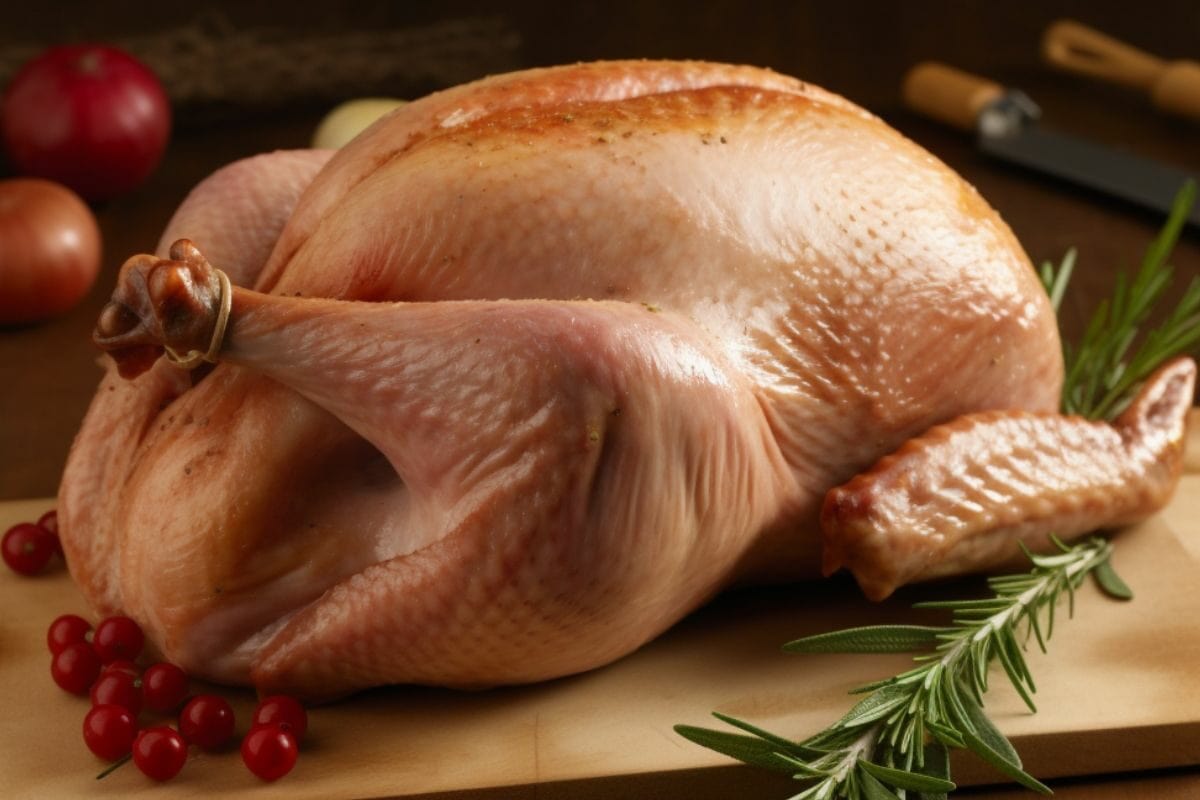Right off the bat, turkey producers are required to indicate whether their product is pre-brined or not on the packaging. This involves indicating the ingredients used to brine the turkey. It could appear as ‘contains salt’ or ‘added sodium up to X%’. Other words to look out for include ‘enhanced’, ‘treated’, and ‘pre-brined’.
At our steakhouse, one of the fastest-moving menu items is our spicy breakfast turkey sandwich. It is packed with flavor and is super easy to prepare. To get the taste just right, we have to source pre-brined turkeys because they are juicier and more flavorful than fresh turkey.
So based on my experience and some other information I’ve gathered over the years, I’ll tell you how to tell if your turkey is pre-brined as well as the different types of brines. I will also tell you how to thaw and season brined meats and leave you with some tried and tested turkey cooking guidelines. Let’s get into it:

Turkey manufacturers will label whether their products are pre-brined or not. Most manufacturers will include the list of ingredients used in the brining process. Others will have related terms like ‘treated’, ‘pre-brined’, or ‘enhanced’.
Generally, pre-brined turkeys tend to have a lighter, more uniform pink color, a slightly softer texture, and a salty taste. If unsure, ask your supermarket or butcher whether your bird is pre-brined or not.
Turkey is pre-brined if it has been soaked in a saltwater solution before being packaged and sold. It is done primarily to lengthen the shelf life of the product and enhance the flavor.
A brine is a concentrated solution of salt and water. Depending on preference, other condiments like rosemary, garlic, peppercorns, and bay leaves can be added.
An ingredient like syrup, brown sugar, or molasses is usually added as a sweetener. Sugar also goes a long way in enhancing the brown color of the meat’s crust.
When meat soaks in brine, the brine drains moisture from the meat. When left to sit in the solution longer, the meat reabsorbs the brine with a richer concentration of salt. Salt breaks down protein muscle fibers making it the ultimate meat tenderizer. Extra moisture absorbed during the brining process keeps the meat from drying out as it cooks.
For dark meat, which is usually denser than white meat, soaking in brining solutions ensures it takes a shorter while to cook till fork tender. Dark meat here refers to leg and thigh meat.
Related Reading
While brined turkey has already been seasoned, adding extra spices, herbs, butter or smoke can still elevate the taste.
It all depends on your preference, so don’t be afraid to experiment with a variety of flavorings and lots of different rubs until you land on your perfect recipe. Here are my top 3 recommendations:
Can you? Yes. Should you? No.
I would not recommend brining a turkey twice because it will result in an overly salty meal. Pre-brined turkeys have already long been soaked in a saltwater solution for between 8-20 hours depending on size.
Immersing it yet again in a brine solution will definitely leave you with a meal you will probably toss away.

There are several types of brines but they are generally divided into 2 groups, wet and dry brines.
A wet brine refers to salt and spices that have been mixed into a solvent like water or diluted vinegar. Salt breaks down the protein fibers in the meat, allowing it to absorb the brine thus keeping the meat juicy.
Simply put, dry brining involves salting the meat and letting it rest before cooking it. It utilizes the meat’s moisture to create a brine solution on the surface of the meat. The brine is then reabsorbed back into the meat fibers.
So how much salt is too much salt for a dry brine? This depends on the size of the turkey. Larger birds will require more salt and more flavor. These are my preferred salt and seasoning portions by size:
Mix salt and seasonings in a bowl and rub generously all over the turkey. Lay the bird in a bowl, and refrigerate uncovered for 24-48 hrs depending on how soft you like your meat.
Unbrined meat, salt water brined meat, and dry brined meats have different distinct tastes because of the different ways they are handled.
Unbrined turkey mainly relies on the natural flavor of the bird for flavor. Any extra flavor can come from the spices and seasoning you will use to cook it. Understandably, whole unbrined turkey is comparatively harder to season.
Dry-brined birds will be tender and have a crispier bark because it has less moisture than their wet-brined counterparts. However, if you let your meat brine for too long, it will yield mushy meat.
Saltwater-brined birds have a lot more moisture than dry-brined birds because they get to absorb the brining solution.
It is essential to pat your pre-brined bird dry with clean paper towels for 3 reasons:

To ensure your turkey cooks quickly and evenly, thaw it before cooking. You can safely thaw out pre-brined frozen turkeys in your refrigerator.
To thaw your bird in the fridge, food safety measures indicate that you should allow a rate of 24 hours for every 4-5 pounds. Turkey thawed using this method can be stored in the refrigerator for up to 2 days.
Never thaw turkey by leaving it to sit at room temperature as this can increase the risk of foodborne illnesses such as Salmonella.
It is recommended to keep turkey roasting temperatures between 165°F-325°F.
Lower than this will keep your meat in the danger zone for too long while any higher will cook the exterior of the bird faster than the inside.
For unstuffed birds, a turkey breast weighing 6-8 lbs should cook for 2.25-3.25 hours.
Whole unstuffed birds weighing between 8-12 lbs should cook for 2.75-3 hours whereas big birds weighing between 18-20lbs should be left to cook for 4.25-4.5 hours.
At a temperature of 165°F that holds for 30 minutes, your turkey is done. For safety and accuracy, it is important to use a meat probe thermometer to check for doneness. I use a ThermaPro TP19 Digital Meat Thermometer for quick accurate readings.
Cooking a stuffed bird is not encouraged because it increases the risk of poultry-related foodborne illness. This is because the raw stuffing will require extra time to cook through even after the turkey is done.
This means that your veggies that came into contact with raw turkey might end up being undercooked.
I recommend cooking the stuffing separately and then adding it to your turkey around an hour before it is done cooking. To do this, first, take the turkey out of the oven and place it on a cutting board. Put your bbq gloves on and use a spoon to get your stuffing into the bird’s cavity. Let it cook for the remaining time.
However, if you insist on raw stuffing, the key to a safe meal is to stick to the temperature recommendations, For stuffed turkey breast weighing 6-8lbs, cook for between 3-3.5 hours at 325°F.
Food safety dictates that for turkeys weighing around 8-12 lbs, cook for 3-3.5 hours. Bigger birds weighing between 18-20 lbs, allow a cooking time of up to 4.25-4.75 hours at 325°F.
When buying a turkey, consider the number of servings you need. As a rule of thumb, allocate 1.25 lbs of turkey per person. By this calculation, a 20lb holiday turkey will sufficiently yield 16 portions.
If you love to get creative with leftovers, adjust for 1.5 lbs of turkey per portion.
You should also read the label to make an informed purchase. Common labeling terms you might find on packaged birds include:
This means that no artificial ingredients, colors, or preservatives have been used. However, many buyers take this to mean the meat is humanely raised which is not always the case.
The USDA forbids farmers from using hormones to boost yields so all turkeys will include this information on the label.
This means that the birds have never been exposed to antibiotics whether through feed, water, or via injections.
Free range means the birds have been reared outdoors in their most natural state all its life.

Yes. Pre-brined turkey is preferred by manufacturers and stores because it has a longer shelf life than fresh turkey.
Yes, a butterball turkey is pre-brined by size. This means that larger birds will have more brine solution than smaller birds so as to achieve their signature taste across all sizes.
Butterball turkeys are brined by injecting the brining solution directly into the breast meat.
Turkey that is pre-brined will always be appropriately labeled on the packaging. All you have to do is read before you make a purchase. If you cannot locate the information, feel free to ask an attendant or your butcher for help.